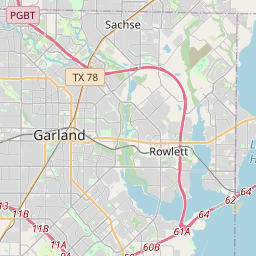First United Methodist Church of Richardson
Historical marker location:






Organized as the Methodist Episcopal Church, south of Richardson, Texas. In 1886, the church was first served by circuit-riding preacher Thomas Jefferson Milam (1843 - 1917). For the first twelve years, services were held in the Cumberland Presbyterian Church.
In 1898, the congregation bought one acre of land on Greenville Avenue from the Houston and Texas Central Railroad, and a white frame church was built. A parsonage was added in 1912, and a pump organ was purchased in 1916. As membership increased, the small church proved inadequate, and final services were held there in April 1924.
A new red brick building was opened in 1925, and the congregation became a full station of the Methodist Church in 1932. The church purchased this site in 1954. A fellowship hall, serving as a temporary sanctuary, and a 22-room educational building were opened on April 13, 1958. A new educational building was erected in July 1960, and the sanctuary and administrative offices were dedicated on September 13, 1964. An activities building was completed in 1972. With the 1968 merger of the Methodist Church and the Evangelical United Brethren Church, the name was changed to First United Methodist Church.
Texas Sesquicentennial 1836 - 1986
As one of the most visible programs of the Texas Historical Commission (THC), historical markers commemorate diverse topics in Texas history, including: the history and architecture of houses, commercial and public buildings, religious congregations, and military sites; events that changed the course of local and state history; and individuals who have made lasting contributions to the state, community organizations, and businesses.
More history nearby
The state of Texas was once an independent country known as the Republic of Texas. It gained independence from Mexico in 1836 and was a separate nation until it was annexed by the United States in 1845.
Established in 1846, Dallas County played a crucial role in the development of North Texas. The county's namesake, George Mifflin Dallas, was the Vice President of the United States at the time. The city of Dallas, the county seat, quickly emerged as a center for trade and commerce due to its strategic location along major transportation routes.
During the late 19th century, Dallas County experienced rapid economic growth driven by industries such as cotton, railroads, and cattle. The city of Dallas became a major hub for cotton trading, attracting business and establishing itself as a prominent financial center in the Southwest.
In the 20th century, Dallas County continued to evolve and diversify its economy. The discovery of oil in the nearby East Texas Oil Field in the early 1900s led to the development of the oil industry in the region, contributing to the county's prosperity. The county also played a significant role in the aerospace industry, hosting the headquarters of major aerospace companies and contributing to the growth of aviation technology.
Dallas County's cultural landscape reflects its vibrant and diverse population. The county is home to a wide range of cultural institutions, including museums, art galleries, theaters, and music venues. Dallas County also played a notable role in the civil rights movement, with important milestones in the fight for equality and integration.
Today, Dallas County stands as a major economic and cultural center. It boasts a robust economy supported by various industries, including finance, technology, healthcare, and telecommunications. The county is known for its thriving arts scene, professional sports teams, and diverse culinary offerings.
With its rich history, economic vitality, and cultural significance, Dallas County continues to shape North Texas as a dynamic and influential region.
Dallas County Timeline
This timeline provides a glimpse into the major events and milestones that have shaped the history of Dallas County, Texas.
Pre-19th Century: The area was originally inhabited by various indigenous tribes, including the Caddo, Wichita, and Comanche.
1839: Dallas County was officially established and named after George Mifflin Dallas, the Vice President of the United States under President James K. Polk.
Mid-19th Century: Dallas County experienced significant growth with the establishment of Dallas as a trading post and the arrival of settlers drawn by the opportunities in trade and agriculture.
Late 1800s: The county prospered with the expansion of railroads, particularly the Texas and Pacific Railway and the Houston and Texas Central Railroad, which solidified Dallas as a major transportation hub.
Early 20th Century: Dallas County saw a surge in economic development and urbanization. Industries such as oil, cotton, banking, and manufacturing fueled the city's growth.
1960s: Dallas County gained national attention due to its role in the civil rights movement. The city of Dallas was the site of the assassination of President John F. Kennedy in 1963.
Late 20th Century: Dallas County continued to experience rapid growth and diversification, becoming a major center for business, finance, and telecommunications. The county is known for its vibrant arts and cultural scene, including the Dallas Arts District.
Today, Dallas County is the second-most populous county in Texas and home to the city of Dallas, a thriving metropolitan area.